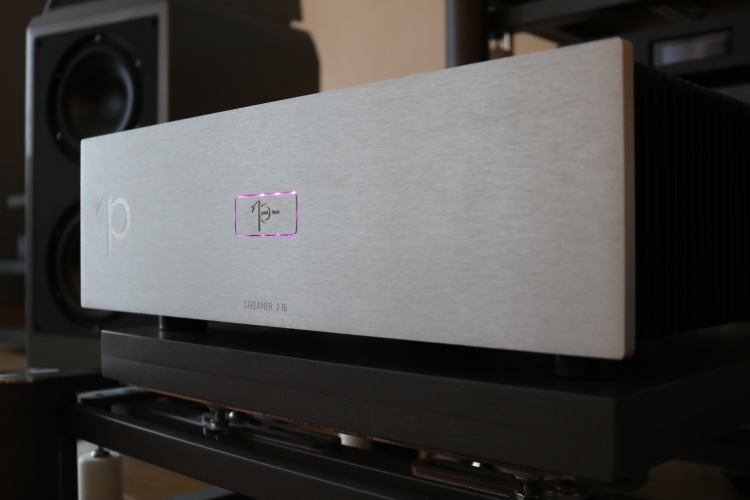
AES/EBU
The default assumption seems to be that because it is a professional standard, that AES/EBU must be a better digital connection than SPDIF. While the standard is invented to overcome losses at very long cable lengths by means of balancing the signal and using a higher impedance, the signal itself is still SPDIF. Coming from the broadcast world, I’ve done my share of comparisons between SPDIF and AES/EBU using a great variety of cables. In each of my past experiments, my personal take has been that AES/EBU tends to sound very precise yet slightly over-controlled. SPDIF over coax, by comparison, always sounded fuller and more relaxed, regardless of the cables that were used. As it turned out, the Pink Faun is no different. For the comparison, in this case, I used standard Belden 1800F and RG59 cables for AES and coax respectively. The AES/EBU output signal, by the way, is sourced from the same board as the SPDIF signal but routed via extra circuitry on a secondary board. Although the difference between AES and coax is not huge by any means, the differences are not difficult to pick up. Indeed, with the Pink Faun, AES/EBU sounds tighter and SPDIF sounds more voluptuous in the midbass. Otherwise, they are quite similar. Between the two, my brain tells me that AES probably yields a more accurate result, but still, I find SPDIF to be emotionally more appealing. Now, whether one or the other is actually better is not really relevant because the connections are both there on the board for the user to simply choose between.
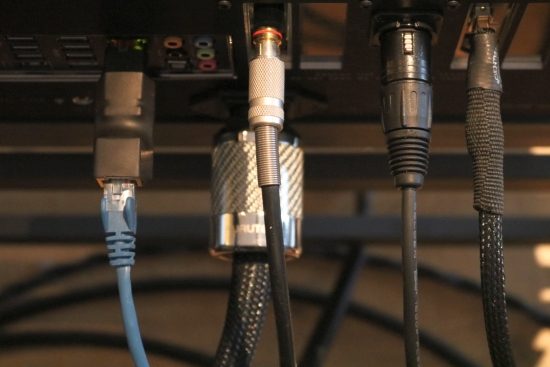
Above: regular Cat5 ethernet cable, Pink Faun PCX-ultra power cable, Belden RG59 coax cable, Belden 1800F AES/EBU cable and Mad Scientist Black Magic USB cable.
USB cables
The 2.16x is sensitive to USB cables and that’s nothing special. It is the case with every server that I tested and it’s just a matter of finding the best cable to match the particular situation. The AudioQuest Diamond USB, for example, works well with the Antipodes and AAZ servers but its lean balance makes the 2.16x sound too cool. The Final Touch Callisto USB that works so synergistically with the Antipodes combo, is also a clear improvement over the AudioQuest with the PinkFaun server. The result is a more refined and more free-flowing delivery, along with further highlighting of the server’s extreme resolution and transparency. Overall, though, I found the balance was still on the lean side for my taste. The most synergistic cable for my taste is the solid and sonorous sounding CAD USB 1. With this cable, the Pink Faun’s USB sound was closest to its SPDIF sound, although the former remained more business-like and the latter more emotionally involving to me, especially with the new OCXO ultra-low noise clock. The CAD sounds nice and full-bodied but if so desired, the sound of the 2.16x can be warmed up further. The MadScientist Black Magic USB, for example, provides a more relaxed and considerably smoother sound with a wide soundstage. The downside of its creamier presentation, however, is that the sound is less speedy and articulate and has less focus and “bite” than with the other USB cables. So, for the remainder of this review, I settled on the CAD. With that variable sorted, there’s still one more output option that would turn out to offer yet another perspective.
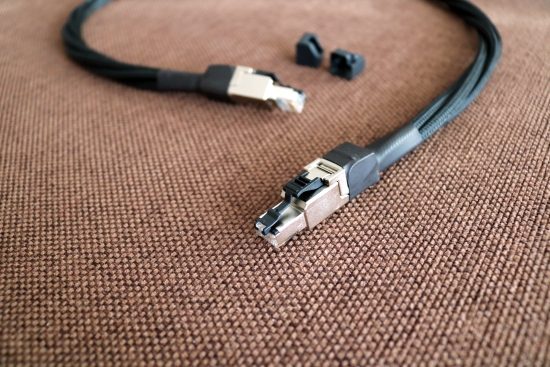
I2S with the Aqua Formula xHD DAC
To enable the I2S tests, I changed the surrounding setup. So far, my impressions were formed using the CH C1 DAC directly to the CH A1.5 power amp but because the C1’s I2S implementation uses a proprietary connector, I turned to the Aqua Formula xHD DAC that uses an ethernet connector and compatible pinout. As the Aqua does not have volume control, I also added the Ayon Stealth DAC and preamp, in this case using only its analog preamp section. Before proceeding to the I2S part, I first compared USB to SPDIF using the Formula xHD and confirmed that, even though this DAC has a different character, the relative differences between the two outputs were the same as they were using the C1 DAC.
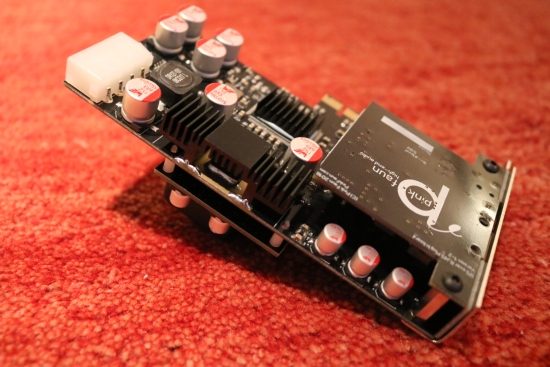
Above and below:Pink Faun I2S interface board with the new ultra-low noise OCXO clock.
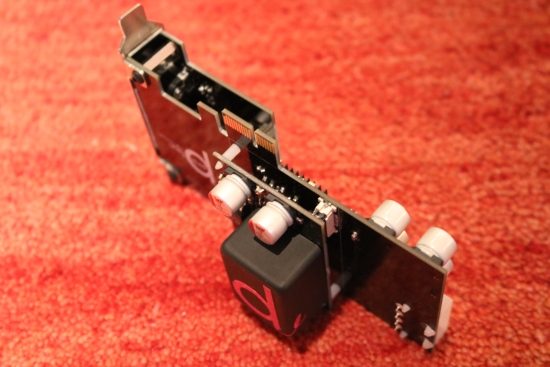
The I2S board was added to the 2.16x in place of the SPDIF board and on it, I used the same OCXO ultra-low noise clock. Using my most articulate no-name brand CAT6 cable (that came with the Antipodes servers), I started my comparisons between USB and I2S. Just like the OCXO ultra-low noise clock added precision to the SPDIF board while retaining all the musicality, I2S is a lot more accurate than SPDIF, in fact, it is very close in tightness and articulation to USB, but, you guessed it, with all the musicality retained. Granted, SPDIF is a little smoother still and therefore arguably slightly more romantic. If we’re honest, the extra romance might well be the result of coloration of some sort, so the question becomes a personal one: do you want the most accurate sound or a romanticized version of it. For me, in any event, I2S is clearly the way to go as it has all the precision, speed, and articulation of the USB card (and that my brain craves) while somehow sounding deeper, wider and richer and avoiding the dimensionally flatter and more matter-of-fact sound of the USB output. The success of this I2S connection reminds me of earlier experiences using Clocklink with Wadia products and Native X Digital Lens mode with the PS Audio PWD MKII and my findings are consistent: separating clock and music signal is, quite simply, always the better option.
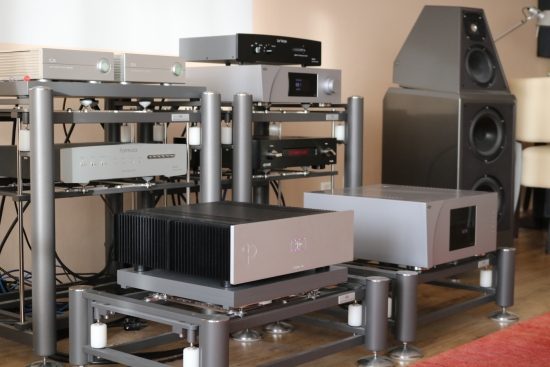
Changing from the standard Ethernet cable to the heavy and beautifully-made Pink Faun cable provides a very different perspective: much smoother, more relaxed and sweeter in the treble and with great finesse but along with this, the overall speed and especially the articulation in the bass, also take a step backward. Then again, the Pink Faun I2S cable does re-introduce some of the romance that got lost when changing from SPDIF to I2S, making this yet another option to tweak the sound to personal preferences.
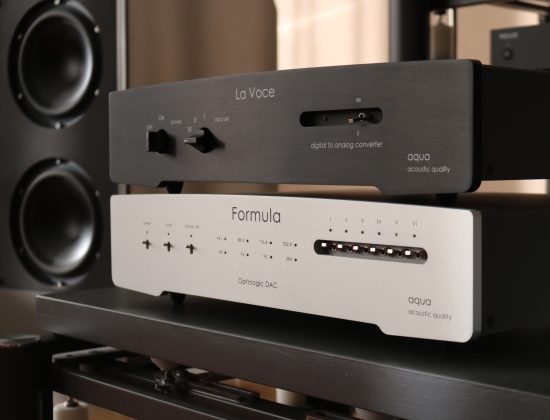
Aqua La Voce DAC
So far, the C1 DAC provides the most sonorous and robust sound and is overall the best match for my taste but the Formula xHD actually offers similar levels of transparency and resolution and refinement, losing out only in terms of bass solidity and richness of tone. A nice alternative was offered in the shape of the Aqua La Voce DAC which was on a visit for a separate review. Although I could not get I2S to work with this DAC (which is likely due to a different DIP switch setting internally), I did use it via USB and coax. The La Voce is considerably more affordable than the Formula xHD and this was evident from the lower overall level of transparency, detail, and refinement. The La Voce DAC is not voiced the same as the Formula xHD, rather, its considerably smoother, warmer and more relaxed presentation actually married quite well with the Pink Faun 2.16x and even worked quite synergistically with the latter using USB.
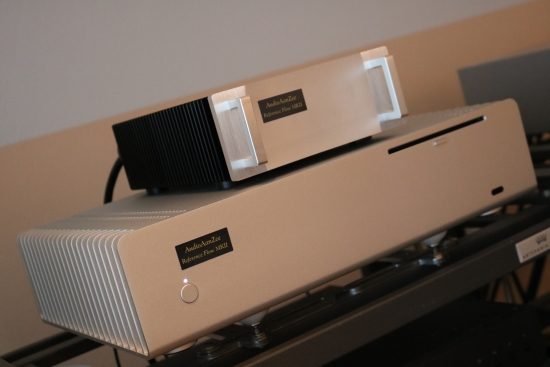
AudioAanZee Reference Flow MKII
The AudioAanZee Reference Flow MKII server is in a very different price class, and as can be expected, in an absolute sense, it is not performing in the same league. On the other hand, it still does many things very well and ultimately the choice between audio components is just as much about absolute performance as it is about personal taste. The Reference Flow MKII only offers USB output but even so, it sounds less flat and more 3D than many other servers, but it can’t match the Pink Faun’s level of imaging. When compared using USB, the Pink Faun projects the sound more forward and creates a more tangible sound bubble around the listener. Where the Reference Flow MKII really excels is in fluidity and refinement and in these two areas it actually performs just as well as the Pink Faun 2.16x. Otherwise, the two servers have very different perspectives, though. While the Reference Flow MKII aims for a relaxed and pleasant presentation the 2.16x is not as forgiving but aims for a much more concrete, more exhilarating performance and where the latter really makes the difference is in terms of speed, articulation, and timbre.
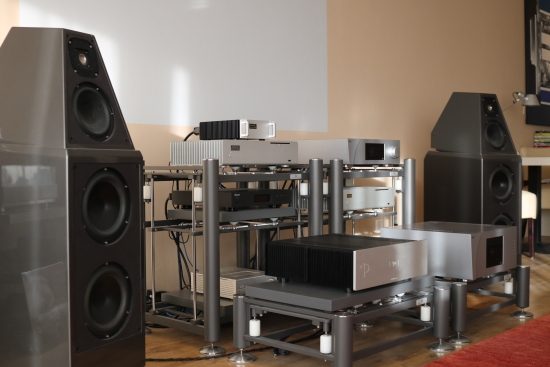
Melco N1ZH
As can be read in detail in its own review, I feel that the Melco N1ZH performs at its best using its dedicated network connection. Via USB it is a little light in the bass and a little lean in tonality but it does provide a very high level of transparency, resolution, and articulation. For my taste, its USB sound is a little bit too clean but in audiophile terms, it is pretty much state of the art in the aforementioned aspects. At 5000 euro, that is a really good achievement. At 4 times that amount, one would expect the Pink Faun to at least achieve the same results and indeed it does, and then some! Using its USB output, the 2.16x is just as transparent as the Melco but even more articulate and also more highly resolving, with more apparent silence between the notes on the one hand and more incisiveness and impact on the other. But the 2.16x further adds to this by also sounding more inviting and grander. It simply sounds larger in all dimensions.
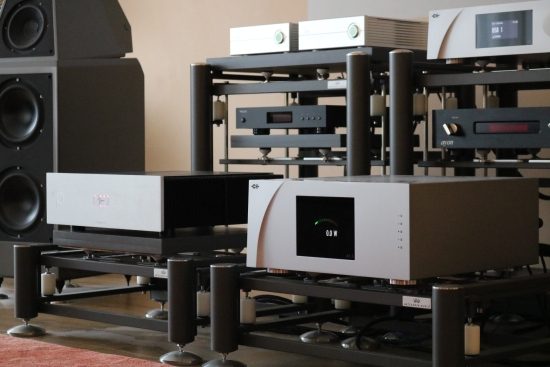
Antipodes CX+EX combo
Yet another different perspective is offered by the Antipodes CX+EX combo, a brand characterized by its very recognizable combination of robustness and flow. Indeed, this quality stands out, also in comparison with the 2.16x, especially when comparing the two servers with the same Belden power cables and both via USB. But even when comparing the Pink Faun with the PCX-ultra power cable and SPDIF to the Antipodes CX+EX combo with Belden cable and USB, the latter still has a more sonorous sound. The combo indeed sounds a lot beefier and more solid than the AudioAanZee server but they cannot match the Pink Faun in terms of articulation, tightness, and resoluteness. In fact, in a direct comparison after having listened to the Pink Faun for a while, one has to get accustomed to the comparatively darker and more shut-in Antipodes presentation. In terms of soundstage size, both in terms of width and surrounding effect, the Pink Faun has the edge, especially when using SPDIF, but the behavior of images within that soundstage differs. Whereas the Pink Faun has an immediate delivery and a tendency to push everything forward, the Antipodes combo has a more relaxed nature. Indeed, the Antipodes sound, at first, seems to lack clarity and bite but especially with slow jazz or soul music I quite like how voices and acoustical instruments breathe more freely, reaching out to you in a more gentle manner as I imagine real human bodies and acoustical instruments would.
Perhaps as a consequence of being less explicitly focused, the Antipodes combo has an almost indefinable quality that makes it concentrate less on the rhythmical aspects and instead makes the melodies come to life. I call this the lyrical aspect. It is apart of the musical performance that goes beyond typical audiophile parameters. I always struggle to define it but it seems that it has a lot to do with the amount of control. The way I see it, audio equipment in general and digital equipment especially can also have too little or too much control, much like different speakers need different amounts of feedback or damping factor to achieve the ideal balance between control and flow.
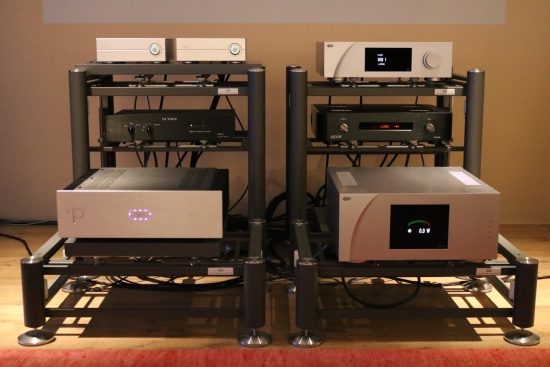
Ayon Stealth tube preamp
So far, using the CH Precision setup and no analog preamp, I don’t think it comes as a surprise when I say that I am a little bit torn between the Pink Faun and the Antipodes as both have their specific areas in which they excel. But ultimately, in this situation, I find the Antipodes emotionally and musically more satisfying, even if it cannot match the Pink Faun in many audiophile parameters. However, when adding the Ayon Stealth tube preamp, the balance shifts considerably, and the server’s super-tight delivery is balanced out, leaving only a highly refined and superbly hi-res presentation that admittedly remains a little forward, at least with the Wilsons, but is definitely much more musical and, when used with SPDIF or I2S, also has the aforementioned lyrical aspect.
Indeed, with the Aqua DAC via I2S connection, the Ayon Stealth tube preamp, and the CH A1.5, the Pink Faun really is staggeringly good. The combination is perfectly in balance, emotionally as well as technically.
It’s becoming something of a personal mantra and I’m sure that you, dear reader, would like to read a polarizing conclusion but I’m afraid that things are just always relative, especially at this level. Sure enough, the presence or absence of the tube preamp here makes a notable difference, meaning that system synergy really is a major factor. While I feel that the Antipodes combo remains the more lyrical of the two, I’m seriously tempted by the room-filling, utterly precise and highly refined Pink Faun presentation. On an audiophile level, there is no doubt that it is the best server that I’ve heard so far. Ok, there, I said it. But ultimately, and as always in audio, the success of any component is dependent on the system context as much as it is a matter of taste.
HQ Player revisited
To rule out as many variables as possible, I briefly revisited the HQ Player functionality and compared the Antipodes and Pink Faun servers with and without it. When using HQ Player as the renderer for the Antipodes CX-EX combo, the combo sounds more precise and articulate and its delivery arguably comes closer to the delivery of the Pink Faun 2.16x with RoonReady as the renderer but in the process, the Antipodes combo also loses a bit of its characteristic full-bodied tonality. Switch to HQ Player as the renderer on the Pink Faun as well, however, and the relative difference between the two servers is restored and basically the same as it is when both are using RoonReady as the renderer. What I conclude from this is that both servers have their own inherent sound signature and while HQ player raises the technical performance and shaves off a small amount of the server’s character, it does not level the playing field.
Conclusion
With the 2.16x, Pink Faun have created a beast of a music server. On an audiophile-level, it is easily the best server that I’ve heard so far. Importantly, added to all of its audiophile splendor, is a level of liquidity, flow, and refinement that normally does not go hand in hand with such technical perfection. The most musically engaging delivery was achieved using the optional SPDIF and I2S interface boards, especially when outfitted with the new OCXO ultra-low noise clock.
This concludes the main part of the review. Continue reading on the next page for the detailed technical specifications.




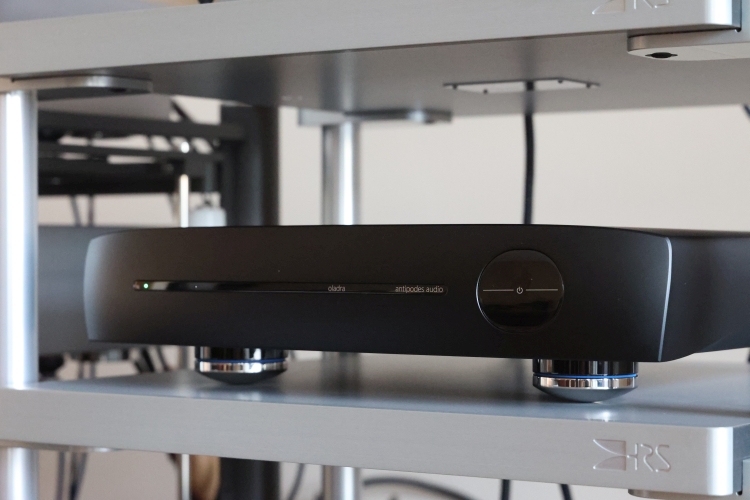
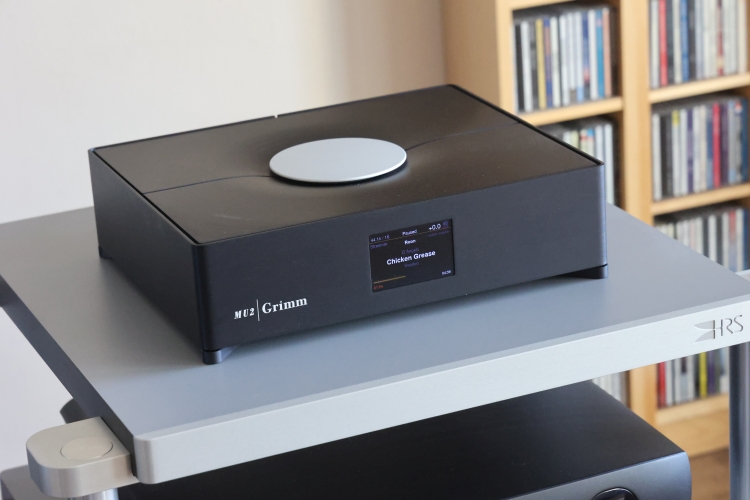
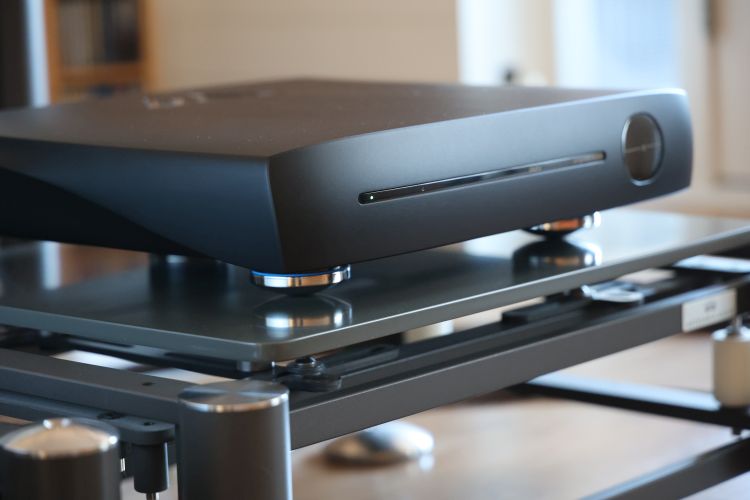
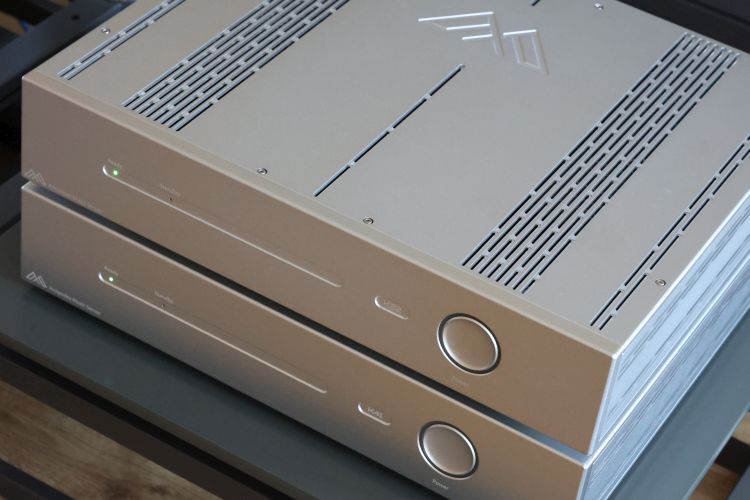
Christiaan, I am reading some interesting things about the 432 EVO MASTER server. It is said to be one of the best sounding servers on the market, would you be able to get one in for a review? I would like to know how it compares to the Pink Faun 2.16X
Hi Paul, actually, I was approached by Frederic vanden Poel during the XSFi show a few weeks ago about reviewing his latest server. So, that may well happen:-)
That would be great. I’d love to know how the Taiko Audio Extreme compares as well, especially to the 2.16x. I’m looking for a quality server, just wondering if I need to save a little more!
Haha yes, I understand. Although there are currently no plans for testing this server it’s still on the TO DO list.
Very impressive review.
I have a Aqua la scala mk2 dac and a SOtM sms200ultra using it as roon endpoint. I’m mainly interested in the upcoming PF Scion but this review was very useful, both because I guess the Scion will have a similar sound signature as the 2.16x and because of the comparisons of usb and i2s.
Thanks,
Rick
Hi Christiaan,
thia is another excellent review, highlighting all aspects of audiophile servers.
To further explore the top league of servers you should review the following:
Taiko Audio SGM Extreme
and
Innuos Zenith Statement
Thank you
Matthias
Hi Christiaan
Nice review. Are you planning in the near future to review the Grimm MU1?
Iam in the race to buy a new streamer for my Mola-Mola Tambaqui dac, the question is what to buy.
Martin
Hi Martin, I may well indeed but have no plans as of yet. However, I understand from a colleague reviewer whose opinion I trust that the MU1 with Tambaqui is one of the best server/DAC combo’s he’s heard.
Hi Christiaan, I am very keen to find out what your opinion is of the above. Shame that these boards are all additional upgrades that come with additional expense. I have upgraded to the HD board on my C1 at least so now twiddling my thumbs waiting for another splendid review lol ; )
Hi Paul, the review of the Roon Ethernet card has been out for a while. As outlined there in detail, with the Antipodes CX, I do indeed now prefer Ethernet over USB. For the easiest way to be notified of HFA updates, please check the HFA Facebook page where I post all articles that are coming up as well as when they have been published. PS: I agree that the cards are not inexpensive but at the quality level of the C1, I’m afraid that nothing is… in any event, all the CH updates so far have proven to be absolutely worth the expense.
Hi Christian, good review, I’ve been thinking of either getting a Pink Faun 2.16X or something from Taiko Audio who make the SGM gear, I’m very close to getting an Aqua XHD Dac but I also have a Tidal Preos D as well and wondered if it would be worthwhile getting the IS2 board for play through the Aqua XHD and then RCA Connection to the Preos and the Spdif board for going straight to the Preos, would be interested in your thoughts ?
Hi Shane, without exception, I2S has always sounded best to me. I’ve not heard the Tidal or the Taiko Audio/SGM and so can’t comment on this. I do think that the Pink Faun and the Taiko may well be the two best servers in the world. I would advise to listen to them both. If it helps, I always like having options because circumstances can and often will, change, so preparing both coaxial out and I2S is always handy. FYI Aqua has recently issued a V2 output board that adds some more “presence” and “dynamics” to the sound of the xHD, very worthwhile.
Hi Christian, yes I just ordered the Aqua on Wednesday so it’s coming straight from them and should be updated to the latest spec. Do you think getting the Ultra Clocks make a difference to just the normal clocks that can be fitted. For the added price I think it would be a no brainier not to get the Ultra Clocks to boost the performance.
Hi Shane, the ultra clock definitely made a very noticeable difference, making the sound more organic and refined and more natural, less measured, which is interesting as the precision should have actually gone up. That’s the wonderful world of high-end audio, I’m afraid:-)
Hello Christian,
I was wondering if you had heard the 432 EVO Master server and the APL DNP streamer. If so, how would you compare them to the Pink Faun 2.16x streamer ?
Hi Sylvain, Alas, I have not heard the latest 432 server nor the APL but having hear the original 432 EVO I know that it has a very different presentation than the Pink Faun. The former is most notable for its smooth, relaxed and organic 3D sound while the latter is all about transparency, articulation and transient speed. That’s not to say that the 432 lacks detail or the PF cannot sound organic but assuming that the 432 has not changed, basically, the decision is between more relaxed and more articulate.
Hi Christian, thanks a lot for this review and for sharing your inner debates!
As the first comment on this page, I am interested in the comparison with the PF and the CX/EX combo. Clearly the issue we all have is that it is impossible to compare them into our own system the way you did it.
I do have Wilson Audio’s speakers as well and two DACs with tube based outputs, one DAC connected over SPDIF or AES (I switch depending on the type of music – I share your observation) which deals with PCM only, and another one which has its own high quality streamer embedded so connected over ethernet. The latter is more recent, of course, but I could not completely abandon the organic sound of the former on voices. My pream and amp are solid state, very dynamic and great with transient, but still with very analog sounding on the Wilson Audios.
Three questions for you:
1) did you make any comparison using ethernet connections and consequently an external streamer (guess that the EX in this case is useless, so more the CX vs the PF connected over ethernet)?
2) it reads like you had to play a lot with the PF and the connections for getting an organic, non-excessively transparent and forward sound through the Wilson Audios. Should one be worried? For instance, I can’t stand to listen to them with the traditional dCS electronics, and with most of solid state pre-/amplifiers.
3) any thought on how PF compares with the InnuOS statement?
Thanks!
Hi Fabien,
Alas – I’ve not heard any of the Innuos servers.
When the PF was here I did not use it as a streaming endpoint and neither did I compare it to the EX or CX as a streaming endpoint. However, I did change to using the Antipodes CX as a server streaming directly to the C1 using its RoonReady Ethernet card. You can read about this and how it compares to USB in the CH Precision Ethernet_IN HD board Upgrade review.
With the Wilsons and using USB, I found the PF to be too clean for my taste and that’s why I preferred the arguably more organic Antipodes combo even if the PF operates on a higher audiophile level. When using the SPDIF board, however, the PF was really great. But its inherently very high precision means that the pairing with very expressive, at times slightly edgy and intrinsically “trigger-happy” speakers such as the Wilsons could result in an overly-controlled sound. In that case, some mellowing elsewhere in the system may be desirable and this could be done with the server choice (which also downgrades the resolution) or perhaps by using smooth cables.
With the Logans or Kromas, or other smoother sounding speakers, this may be entirely different.
I have a question on the ultra clock for the SPDIF bridge. What does it do in terms of warmth, density, thickness and “bloom”? Is the sound warmer as well (on top of being more natural and organic)?
It’s been a while but off the top of my head maybe the SPDIF bridge output is slightly warmer than USB (in the sense that it has more bloom) but then only very slightly. Mostly, it injects more flow and a more organic quality. I don’t feel that it clogs up or thickens the sound in any way.
great review! … and yet, hand on heart – in 2025 – what do you like more as a technology (in terms of sound quality) – CD transports or computer servers?
It depends on what one wants. I personally want the cleanest, purest, most uneditorialized sound, without it becoming clinical or devoid of life, emotion, and lyrical qualities. To achieve this with a music server is, perhaps unexpectedly, much harder than with a good CD transport. However, I much prefer the comfort of having a library at my finger tips, creating playlists, making quick and easy AB comparisons, etc. If you want stereotypical “analog” warmth, smoothness, and fluidity, well, servers can also do that very well these days. However, many such servers also reduce PRaT, transient attack, or the expression and liveliness in the process. Playback software also has a say in this.
To answer your question literally: as a technology, I prefer music servers and streaming. But I continue to be amazed that it is so much easier to obtain superb sound from a good CD transport, and so easy for a server or music playback software, to dilute the result.